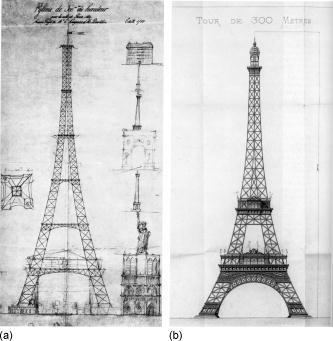What’s the first thing that comes to your mind when you think about France? The answer can be baguette or croissant, but I’m sure that most of you will say the Eiffel Tower.
Is there anything more French than the Eiffel Tower, I wonder?! But now, what if the dear Iron Lady suddenly disappeared? Stopped existing? Imagine it, going to Paris and not taking a picture of its most famous landmark, nor watching her sparkling in the night!
Well, that’s exactly what Parisians of the Belle Époque wanted to do! GET RID OF THE EIFFEL TOWER!
Let’s dive into the history of the Eiffel Tower and learn how a controversial “ugly” structure became one of the world’s most famous landmarks.
The Project
Well, it all started because of the famous Exposition Universelle, or World Exhibition, an international fair that happens every year (yes, it still happens nowadays), in different locations of the world as a way for countries to showcase their achievements in industry, technology, culture, and innovation.
Original concept for the Eiffel Tower sketched by Nouguier and Koechlin, 6 June 1884; (b) final design sketched by Eiffel
France would receive the World Exhibition in 1889, a year that marked the 100th anniversary of the French Revolution, and because of it, they wanted a monumental tower to commemorate this important period of French history. The tower was intended to showcase French industrial prowess and innovation.
From all the entries received, two projects stood out: Gustave Eiffel’s and Jules Bourdais’.
Jules Bourdais was a prestigious architect, who had also won the competition to build the Palais du Trocadéro, a highlight of the 1878 World Exhibition in collaboration with Gabriel Davioud.
Jules Bourdais’ idea was to build a 1200-foot tower, completely made of granite and porphyry, on top of it, a powerful beacon, it would be called the Sun Tower.
Nice try Bourdais, nice try!
After a public battle that took place in the press, Gustave Eiffel ended up winning it, with his project of a 1000-foot iron tower, with the premise of using a more realistic timeframe to build it and at a controlled cost.
So, in 1887 the work began… but not without protests.
Parisians protest the Tower
The architects were the first to complain about the tower of Gustave Eiffel, they argued that an engineer, such as Gustave, shouldn’t be assigned such a project, of course, they would try to feather their own nest!
Then came the artists. A call to action was published in the Le Temps newspaper, entitled “Protest against the Tower of Monsieur Eiffel” asking those responsible for the construction to stop it, this open letter was signed by great names of the artistic world, including, example, Alexandre Dumas (son).
“We come, we writers, painters, sculptors, architects, lovers of the beauty of Paris which was until now intact, to protest with all our strength and all our indignation, in the name of the underestimated taste of the French, in the name of French art and history under threat, against the erection in the very heart of our capital, of the useless and monstrous Eiffel Tower which popular ill-feeling, so often an arbiter of good sense and justice, has already christened the Tower of Babel.”
Gustave Eiffel replied to these protests by saying he believed his tower would have its own beauty.
But the damage was done, citizens began to doubt the aesthetics of Eiffel’s Iron Tower, and influenced by the criticism of the artists, began to oppose and criticize the idea.
The Success of Eiffel’s Tower
Keeping himself firm in the project, Gustave carried on his tower that opened to the public on May 15th, 1889. Surprisingly for those who criticize it, the tower was a grand success, receiving crowds of people, locals and international visitors alike, they all came to see the new landmark of Paris.
In 1894, Paris was preparing to receive its next World Exhibition, in 1900, and for this, the city of Paris was opened for new projects, that included the possibility of modifying or even destroying the tower. Surprisingly, again, no applicants dared to touch the Eiffel Tower.
The tower was made to stand for 20 years only, until 1909, and although demolition was taken seriously in 1903, the Paris City Council decided to preserve the tower and keep it as the landmark of Paris.
Nowadays it is not only a landmark but the symbol of the city, so much so that I wonder if it is worth, or even possible to visit Paris without having a glimpse of the beloved Eiffel Tower.
The post Eiffel Tower: From Controversy to Global Passion appeared first on World by Isa.
This post first appeared on WORLD BY ISA | Travel, Culture & History, please read the originial post: here

